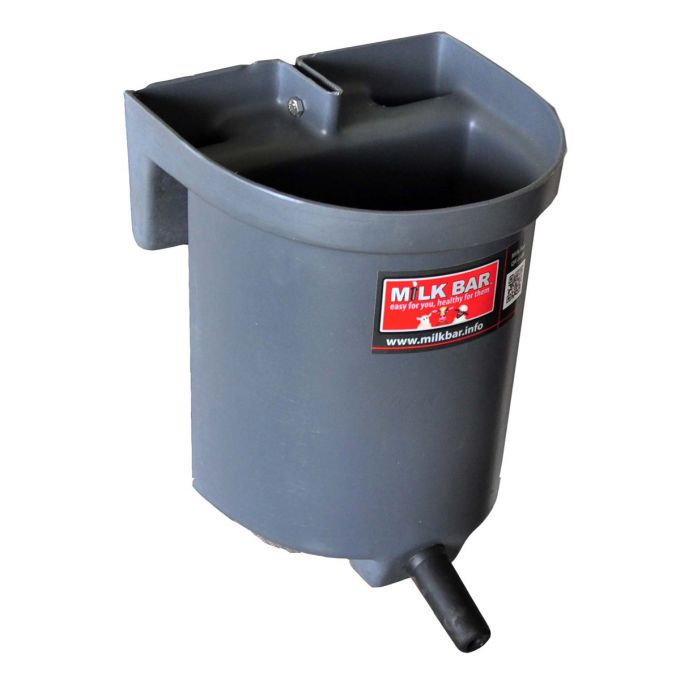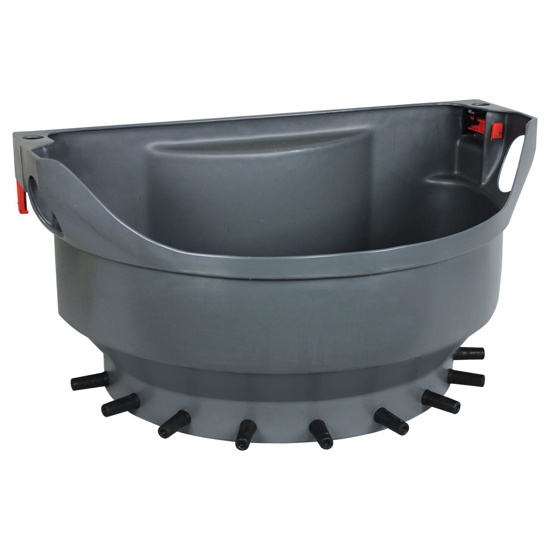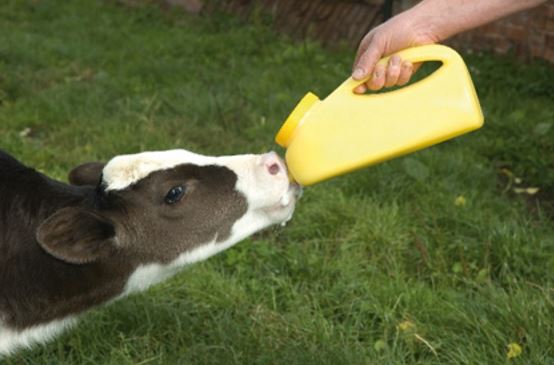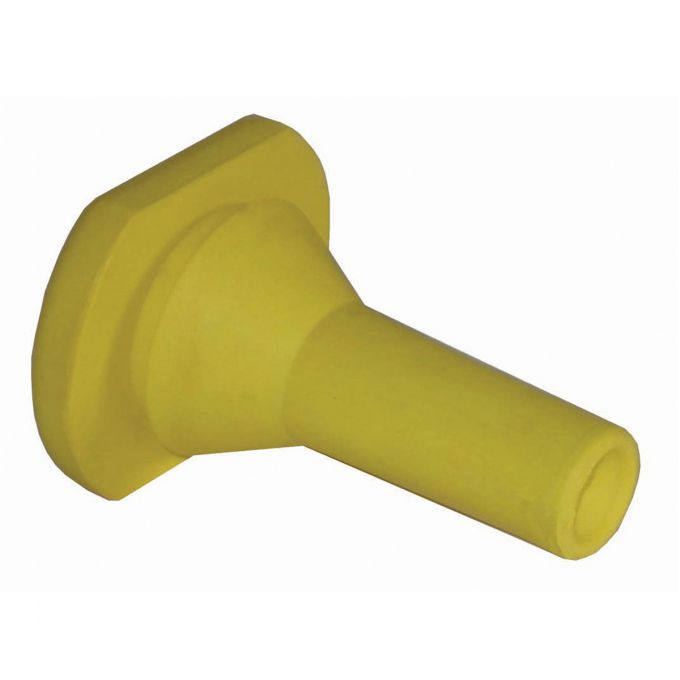EASYFIX Calm Cubicles
An ideal teat will encourage a calf to drink in the same way as it would from its mother: sucking and squeezing, drinking slowly and generating a lot of saliva. Milk bar teats are designed to ensure that all these occur when the calf is drinking from a Milk Bar Feeder. They do not contain an internal valve, but rather a simple rubber flap and a single slit from which milk is released, meaning that the calf has to work as hard as it would with a real teat to get the milk out.
The internal web of the milk bar teat and the strong rubber from which the teats are made controls the flow rate of milk, preventing calves from gulping their milk down at an unnatural speed.
Calves drink at the correct pace of 3 to 4 minutes a litre and generate sufficient saliva for curd formation and maximum lactose absorption. As well as this the risk of raw milk entering the rumen or intestine is removed, preventing nutritional scours. Milk also will not flood into the lungs, thus removing the risk of pneumonia.
Maximum lactose absorption leads to increased growth rates, and cross suckling after feeding with a Milk Bar teat is reduced or eliminated entirely as calves are already satisfied and have generated enough saliva.
As the Milk Bar teats do not have any internal threads or valves, they will not harbour old milk and bacteria once they have been cleaned with warm water. Teats should be cleaned immediately after feeding with warm water and detergent, until the water coming out of them is clear. Teats do not need to be removed from the feeders for cleaning.
It is recommended to use one teat per calf and change it after 8 weeks. Teats should be changed as soon as milk is dribbling out of them, as this means the slit has become too wide and calves will begin to drink too quickly!

Milk Bar 1
The single Milk Bar 1 feeder is great for feeding milk to calves that are kept in single hutches. It will hook over a 25mm diameter rail and allow some leeway for butting. If you practice group rearing, the Milk Bar one can be used for the first three to five days to get your calves used to their teats before they are placed in the group and fed with a group feeder such as the Milk Bar 10 (se below).
The Milk Bar 1 is fitted with the specialised Milk Bar teats for regulated milk flow and sufficient saliva production.
Each Milk Bar 1 feeder can hold up to 3 litres of milk.

Milk Bar 10
The Milk Bar 10 portable feeder is fantastic for feeding groups of up to 10 calves. It fits perfectly into the M.A.R.S system. It can be fitted with normal or colostrum milk bar teats.
Dimensions: Length 850mm x Width 460mm x Height 430mm
Weight: 5 kg
Holds up to 60 litres
Cut out handles for easy carrying and feeders stack into each other, making it easy to carry multiple feeders at a time.
Fitted with Ezi Lock Hooks

Milk Bar Training Bottle
The Milk Bar Training Bottle has a comfortable, strong handle, making it easy to feed your calves by hand when necessary. It can be fitted with the colostrum teat (see below) to feed calves their first meals of colostrum and to teach them how to use the normal milk bar teats and larger feeders. It can also be used when feeding sick calves that cannot drink properly on their own. The new colostrum bottles have an improved lid that contains a small vent to prevent air blocks, ensuring that milk flows smoothly into the teat for the calf to suck out.
The Milk Bar Training bottle can hold 3 litres of milk.

Milk Bar Colostrum Teat
The Milk Bar Colostrum teat is made of softer rubber than the regular Milk Bar teat, making it easy to feed calves colostrum and teach them how to use the regular black teats.
The Milk Bar colostrum teat can be used in the Milk bar trainer bottle (see above) and any other Milk Bar feeder. It is recommended that it is used for the first 5 or 6 feeds before a calf is transferred to a regular milk bar teat. The internal web of the colostrum teat controls the flow rate of milk, allowing calves to drink at the correct pace and generate enough saliva for optimum digestion, preventing problems such as scours and pneumonia.
The absence of internal valves or threads means that the teat, if washed properly, will not harbour old milk or bacteria. The teat should be washed immediately after feeding with warm water and detergent until clear water runs out. Teats do not need to be removed from the feeders for cleaning. Do not use for more than the first 5 or 6 feeds as calves may start to drink too quickly and this can lead to scours.

